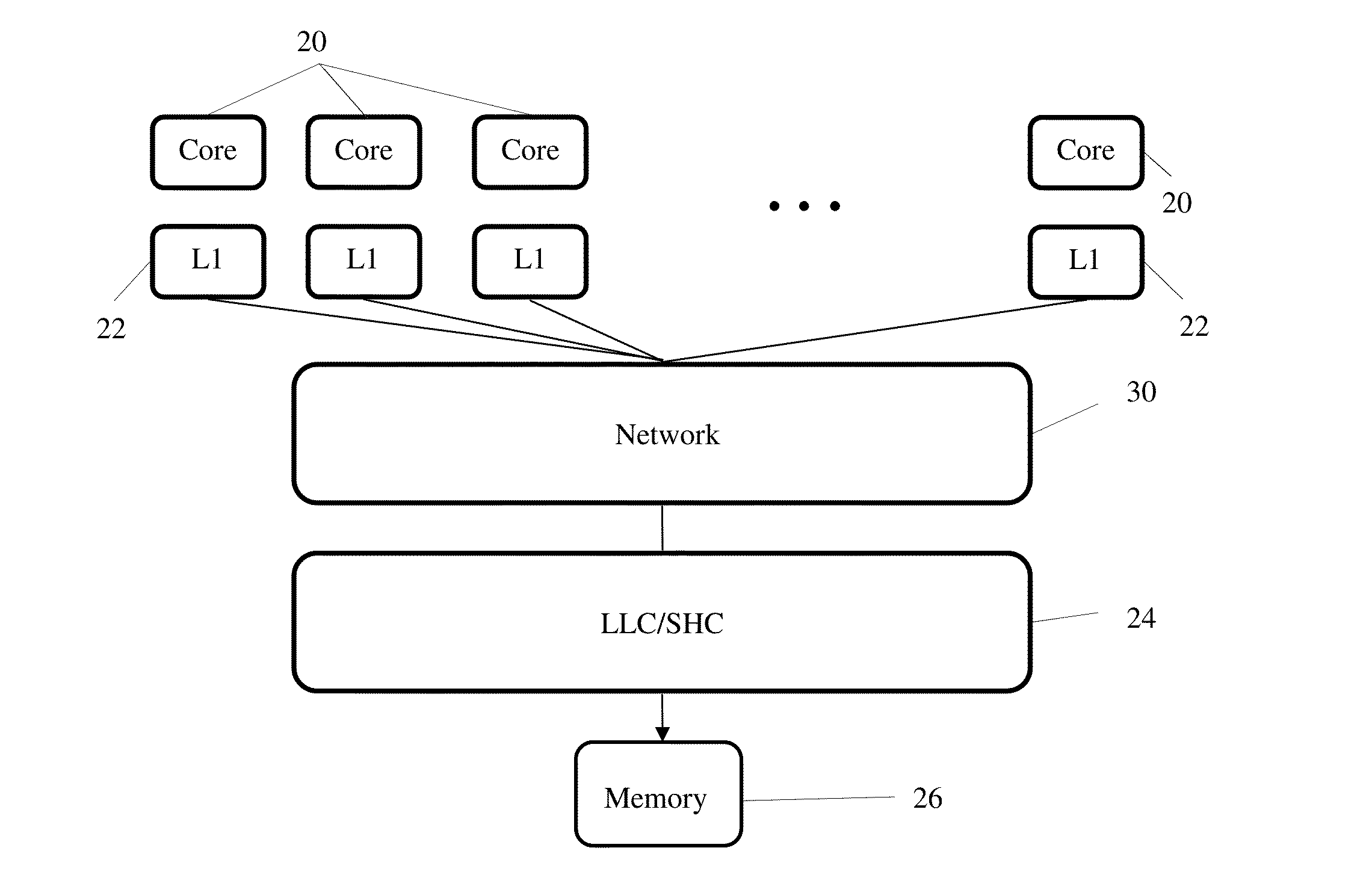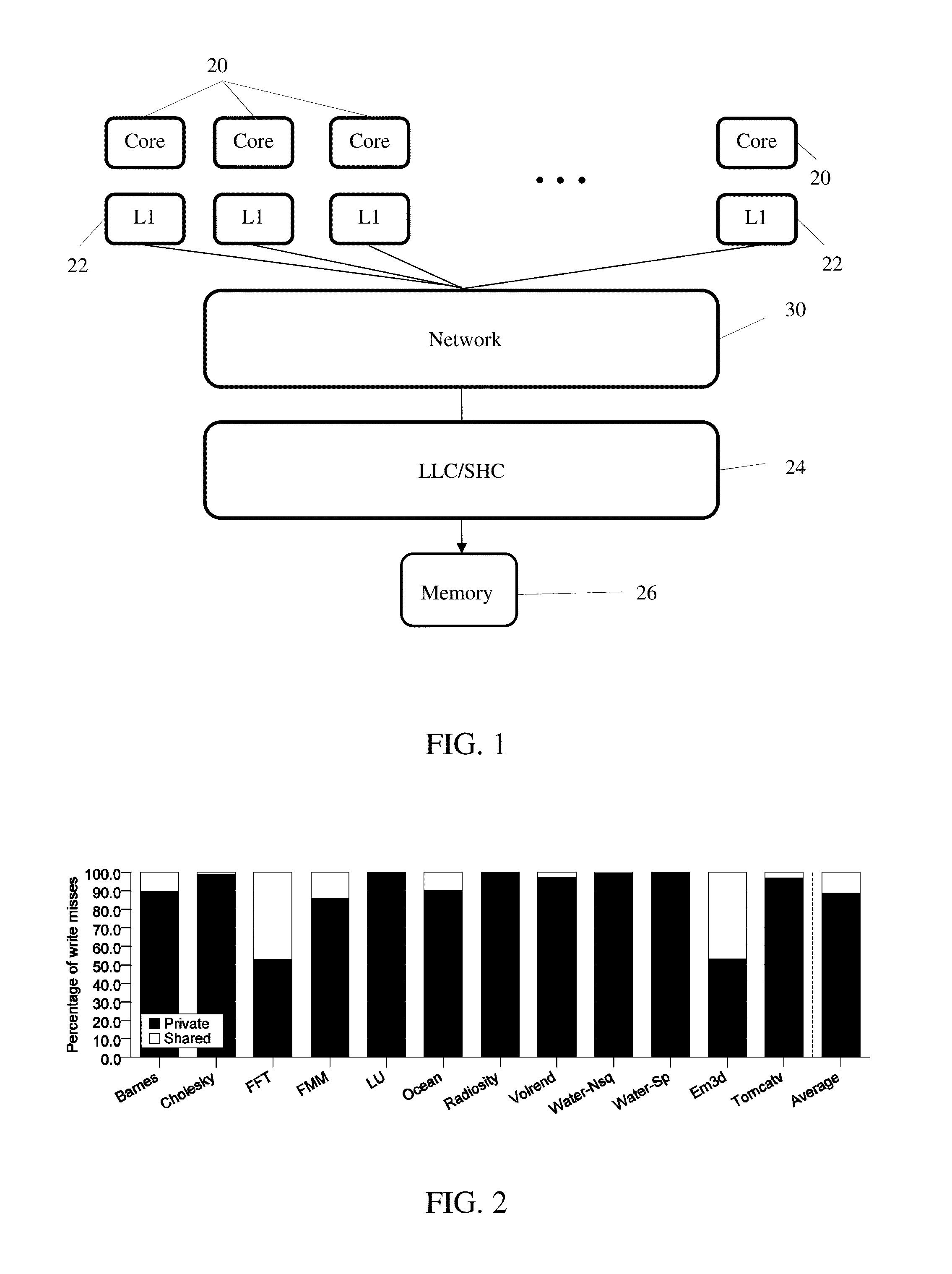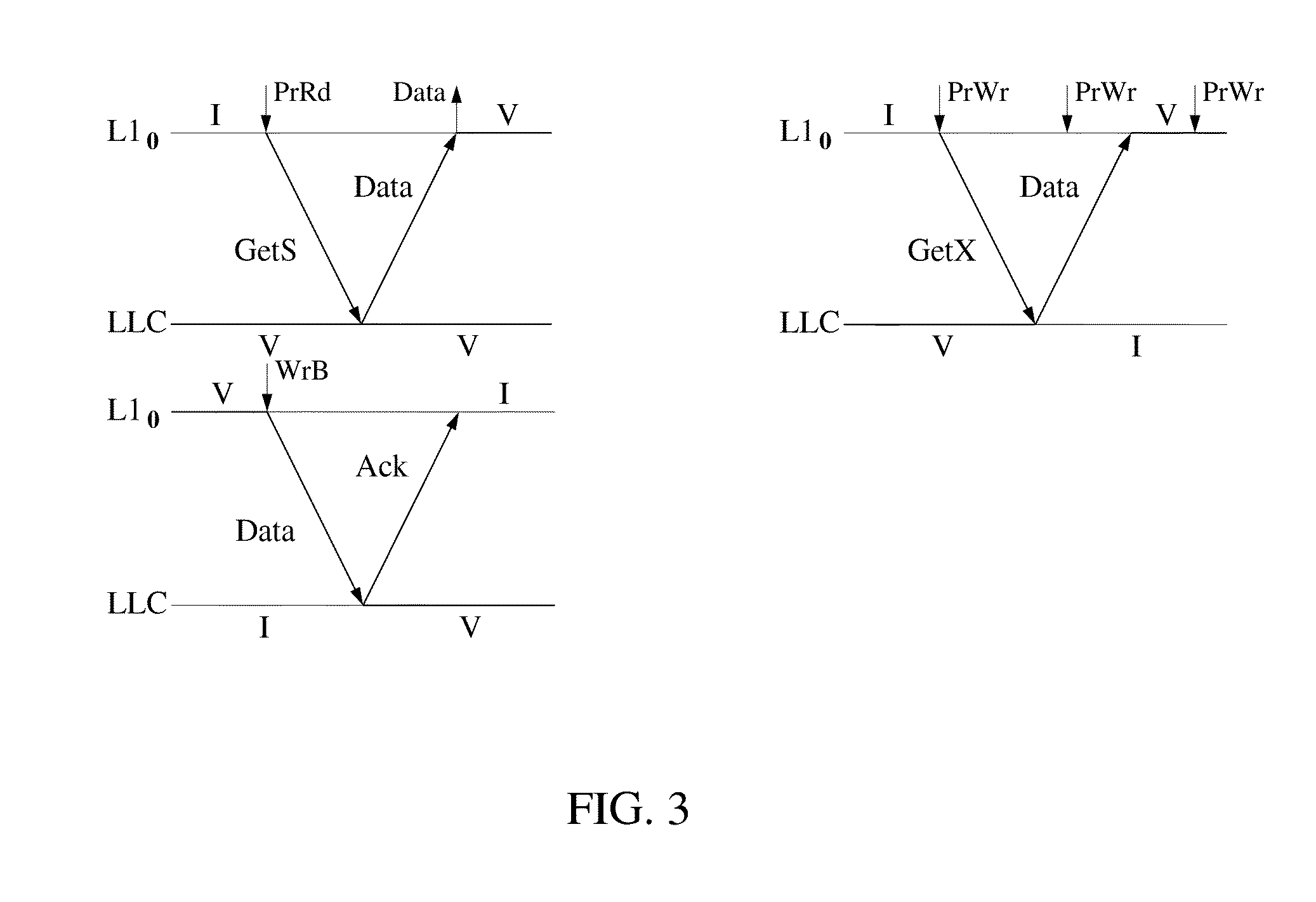System and method for simplifying cache coherence using multiple write policies
a cache coherence and write policy technology, applied in memory address/allocation/relocation, program control, sustainable buildings, etc., can solve the problems of significant complexity of current protocols, ineffective strategies for efficacy, and difficult verification of directory-based cache coherence protocols, etc., to achieve negligible impact on performance and traffic, improve power efficiency, and reduce hardware cost (area).
- Summary
- Abstract
- Description
- Claims
- Application Information
AI Technical Summary
Benefits of technology
Problems solved by technology
Method used
Image
Examples
Embodiment Construction
[0029]The following description of certain examples should not be used to limit the scope of the present invention. Other features, aspects, and advantages of the versions disclosed herein will become apparent to those skilled in the art from the following description, which is by way of illustration, one of the best modes contemplated for carrying out the invention. As will be realized, the versions described herein are capable of other different and obvious aspects, all without departing from the invention. Accordingly, the drawings and descriptions should be regarded as illustrative in nature and not restrictive.
[0030]The present invention will be described with respect to a generalized multi-core / many-core processing chip (also known as a Chip Multiprocessor, CMP) having two or more cores (processors) and an on-chip cache / memory hierarchy. The methods and systems according to the invention relate to general-purpose multi-cores (few fat cores), many-cores (many thin cores) or GP-...
PUM
 Login to View More
Login to View More Abstract
Description
Claims
Application Information
 Login to View More
Login to View More - R&D
- Intellectual Property
- Life Sciences
- Materials
- Tech Scout
- Unparalleled Data Quality
- Higher Quality Content
- 60% Fewer Hallucinations
Browse by: Latest US Patents, China's latest patents, Technical Efficacy Thesaurus, Application Domain, Technology Topic, Popular Technical Reports.
© 2025 PatSnap. All rights reserved.Legal|Privacy policy|Modern Slavery Act Transparency Statement|Sitemap|About US| Contact US: help@patsnap.com



